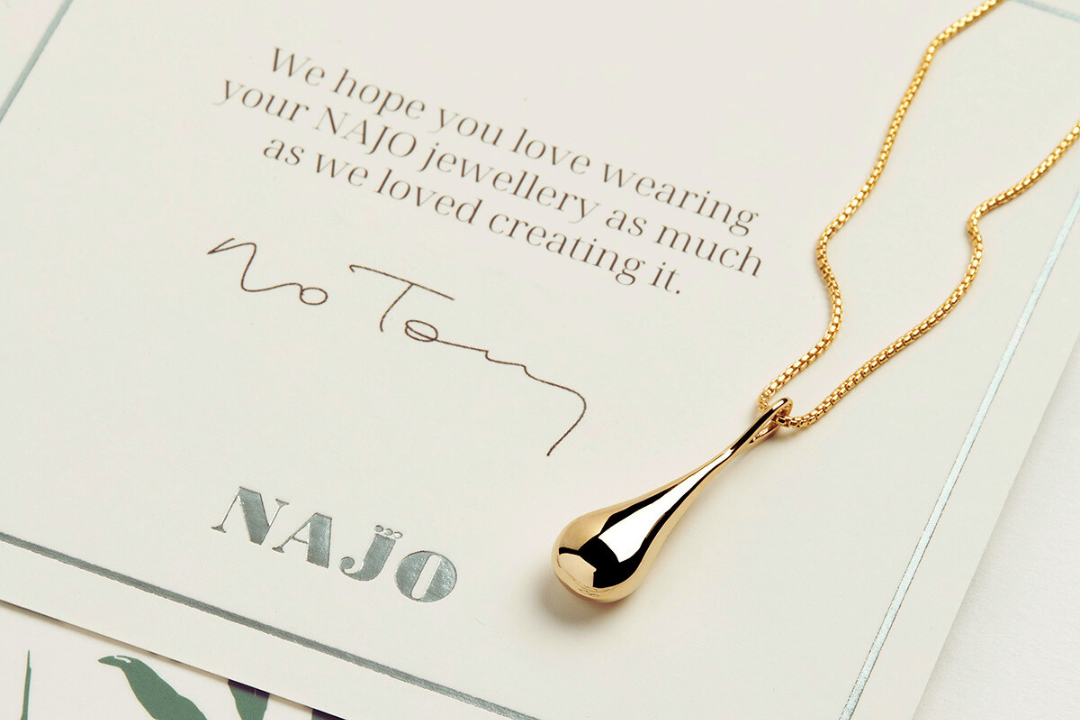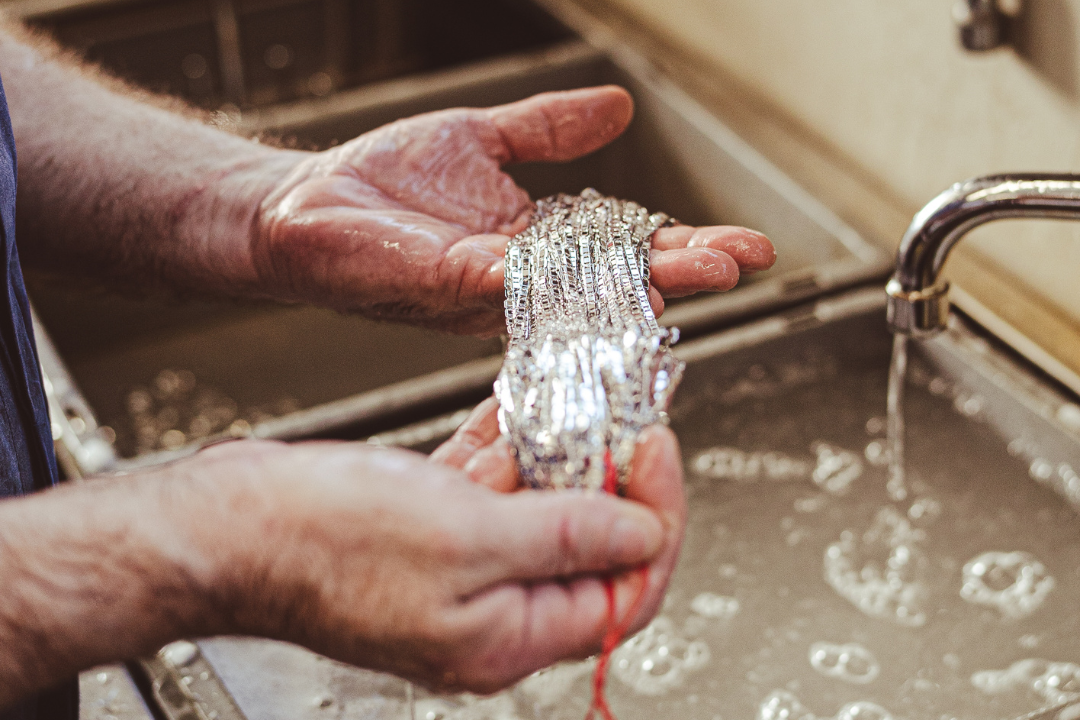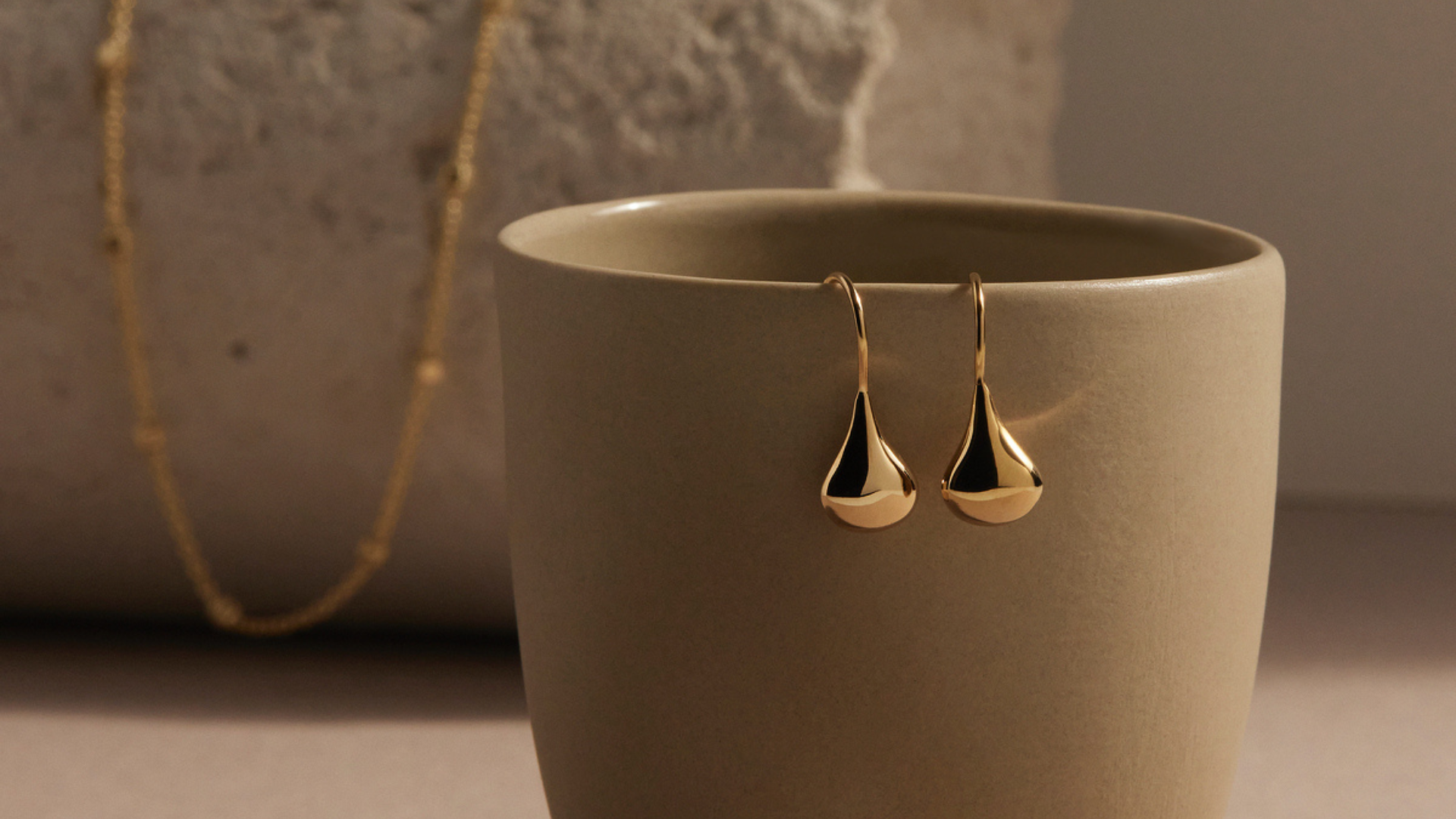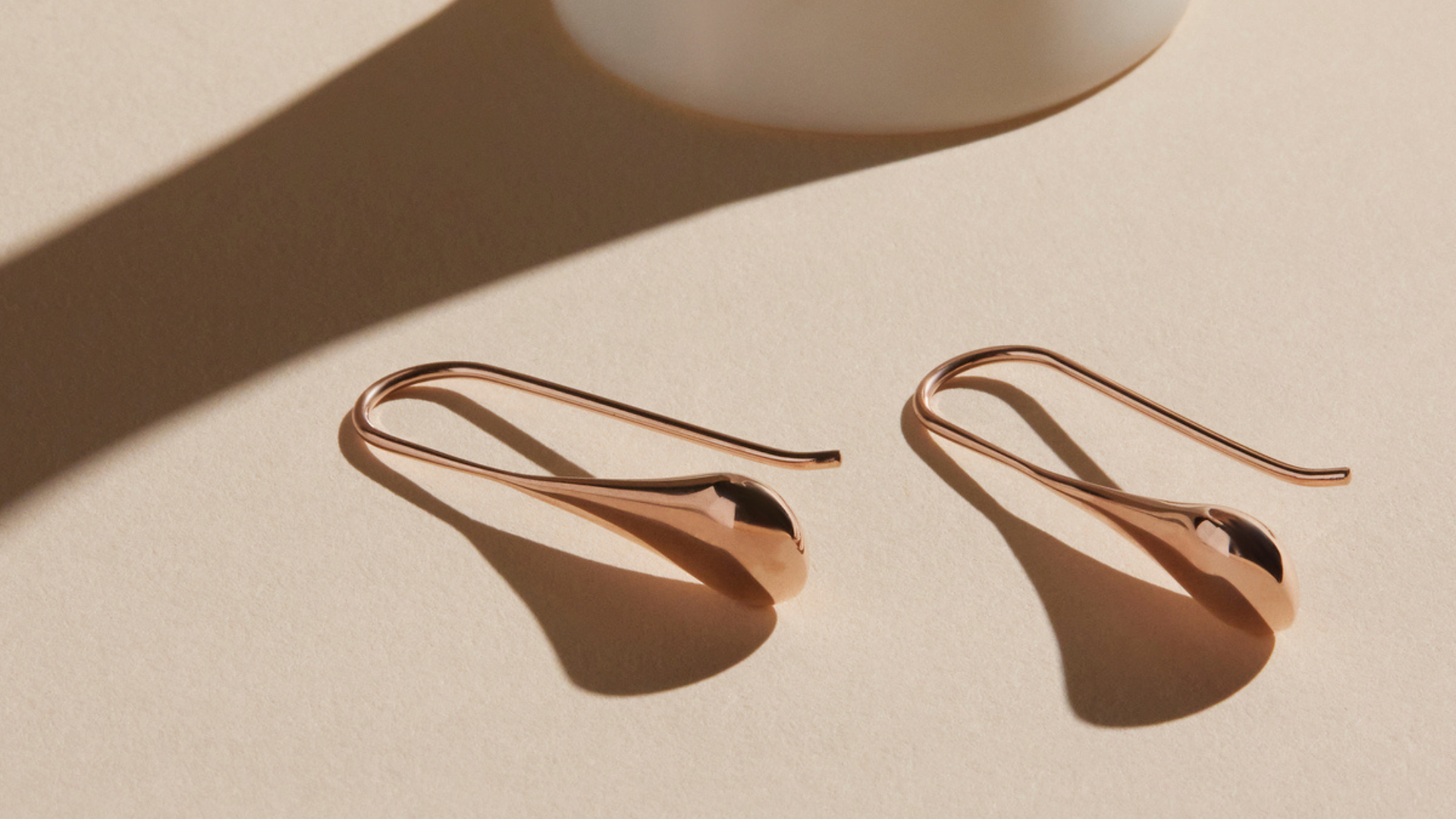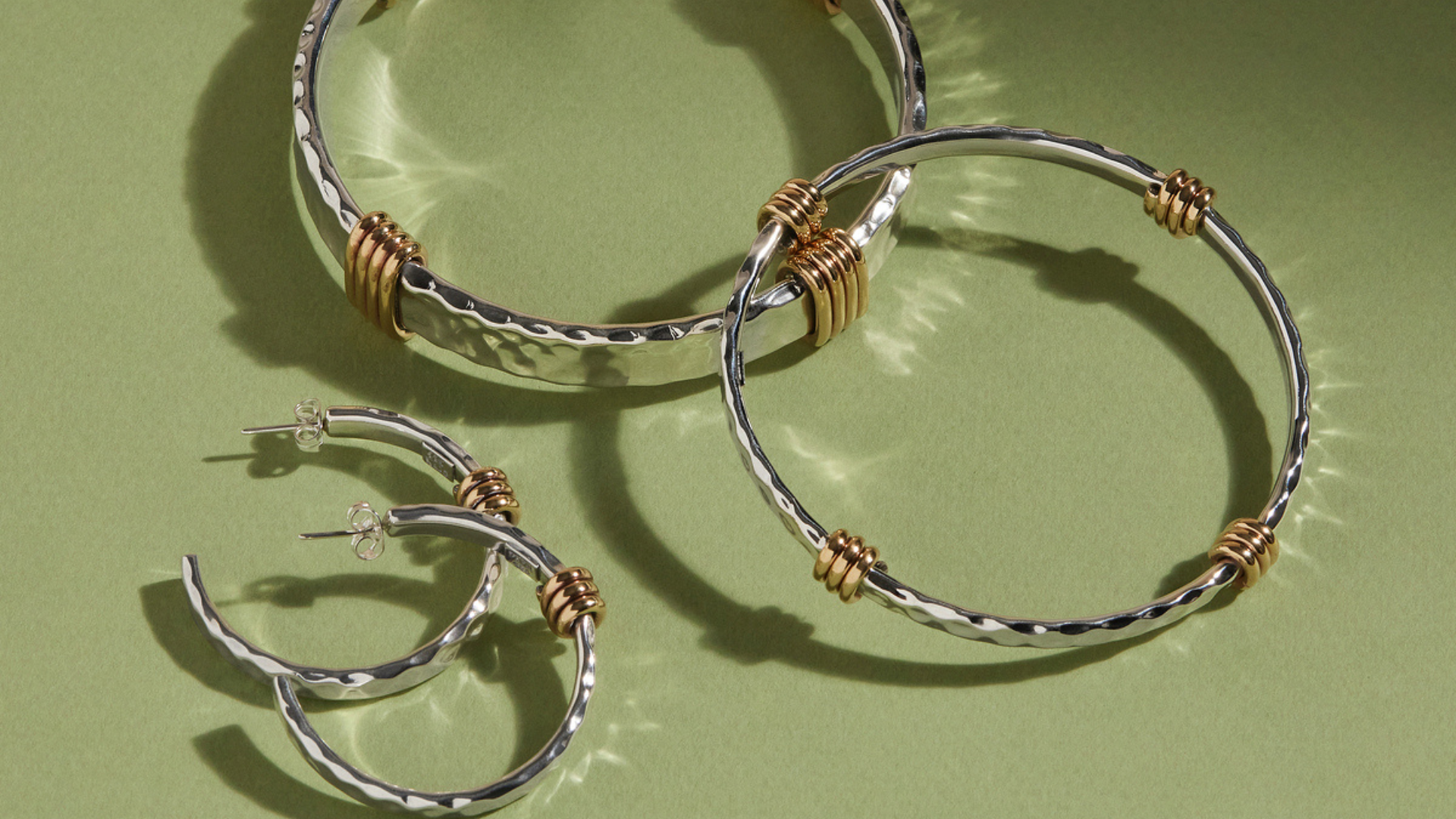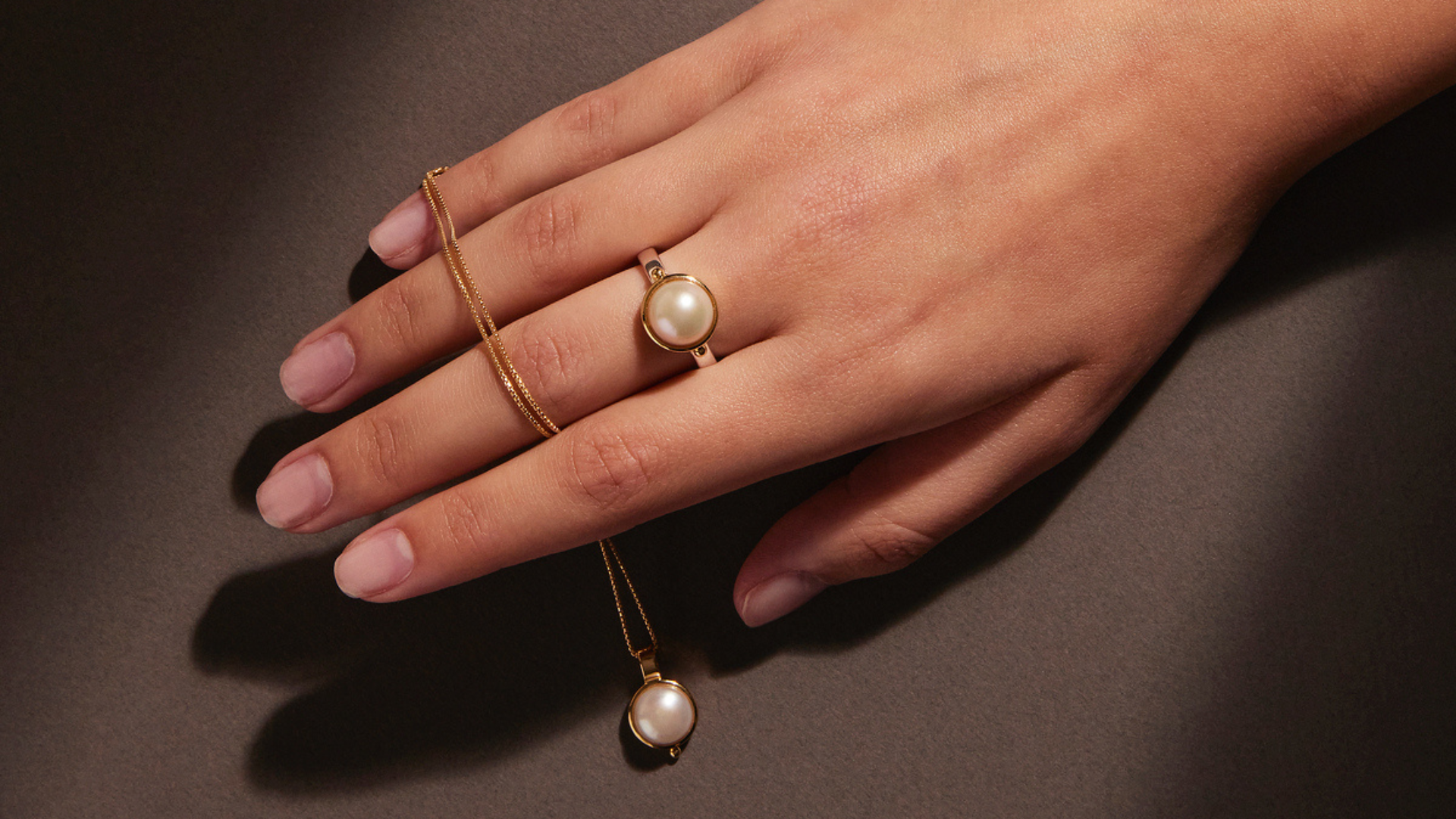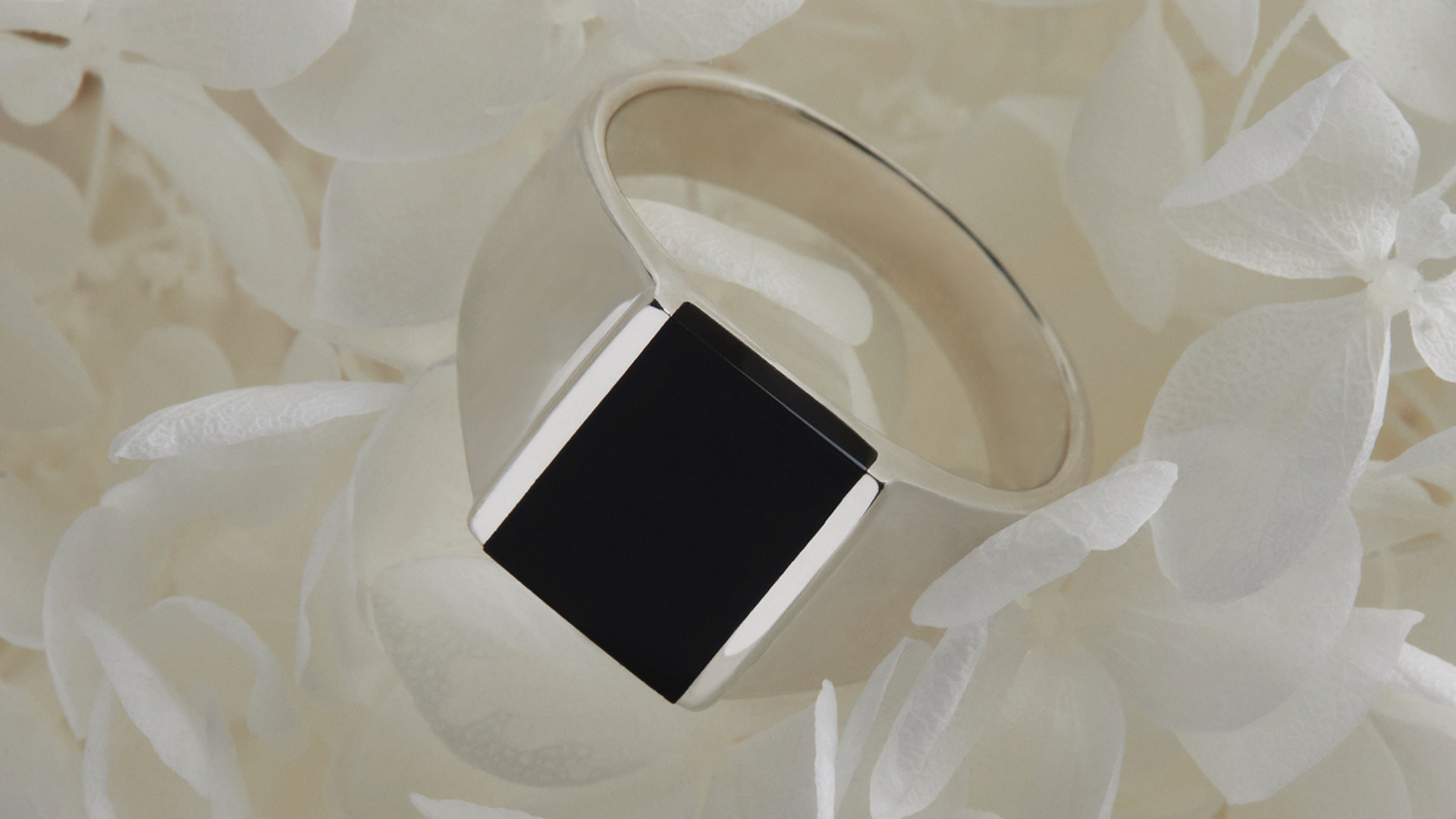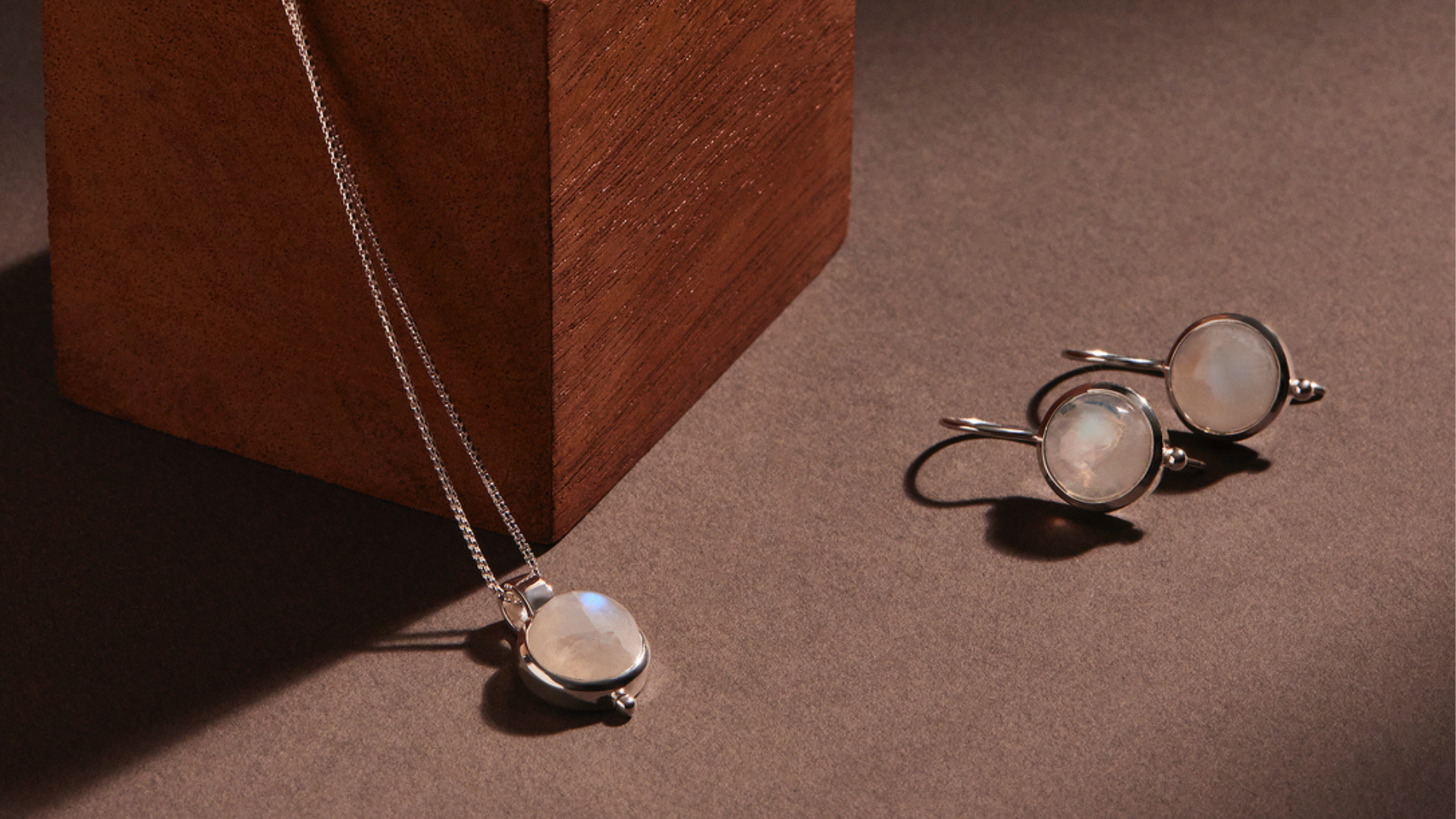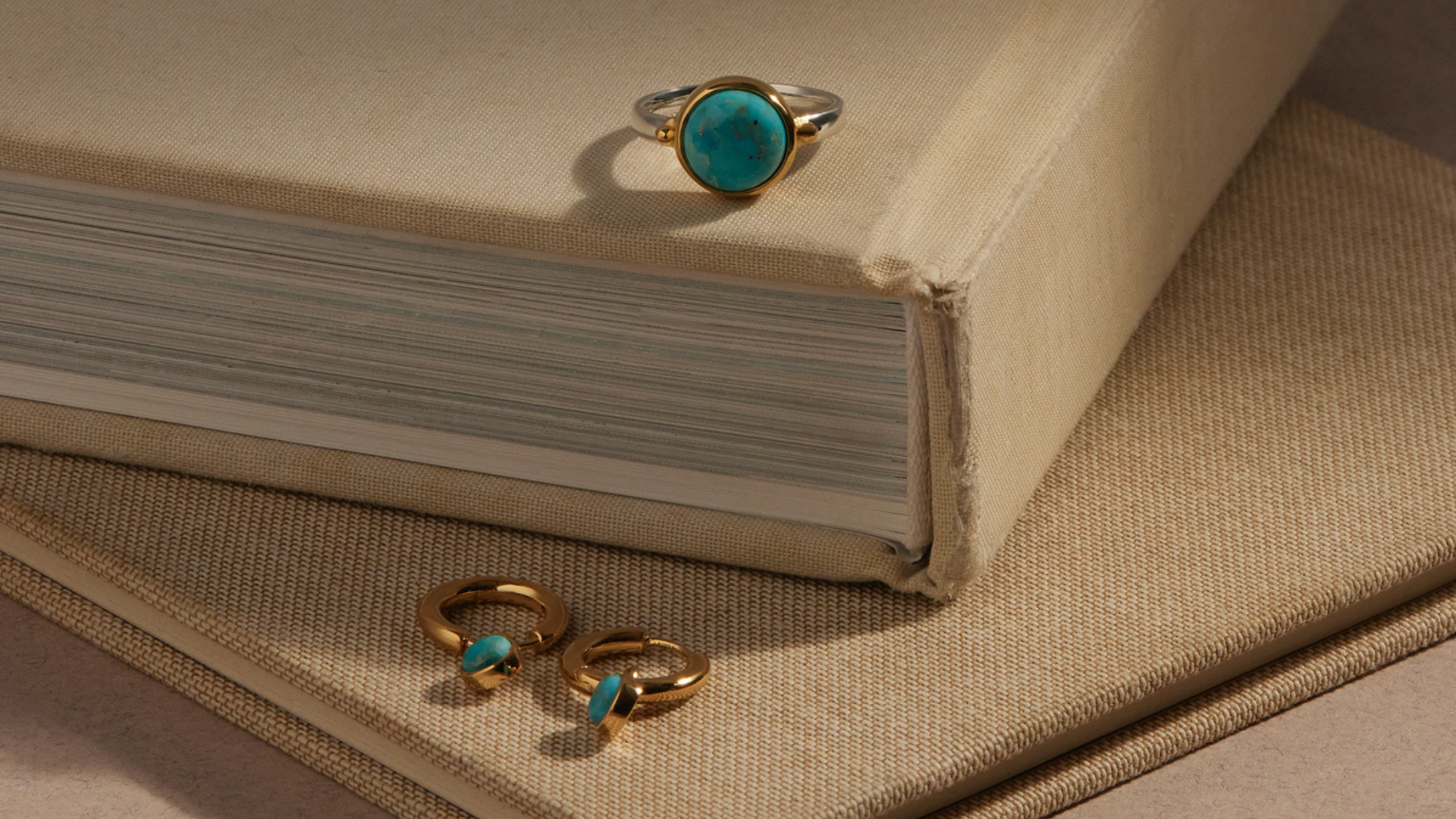Our Metals
925 Sterling Silver
925 sterling silver is a precious metal and one of the ‘noble’ metals. It is an alloy containing 92.5% of silver and 7.5% of other metals, such as platinum, zinc, or copper. This mix gives silver its strength to become a durable metal for jewellery. All of our beautiful pieces are made from Sterling Silver making them hypo-allergenic.
14kt Yellow Gold Plate
14KT Gold contains 58.3% pure gold. The Karat is the amount of gold content in the metal measuring the proportion of pure gold mixed with other alloys. As pure gold or 24KT is too soft to be used for jewellery it is alloyed with other metals for hardness and durability. The alloys can include silver, zinc, copper, palladium and platinum.
14kt Rose Gold Plate
14KT Rose Gold contains 58.3% pure gold. It is made up of 14 parts pure gold and 10 parts alloy. Rose gold gets its warm blush colour from the higher copper content in the alloy. Pure gold or 24KT is considered too soft for jewellery, so it is alloyed with other metals for hardness and durability.
Material Glossary
925 sterling silver
925 sterling silver is a precious metal and one of the ‘noble’ metals. It is an alloy containing 92.5% of silver and 7.5% of other metals, such as platinum, zinc, or copper. This mix gives silver its strength to become a durable metal for jewellery. All of our beautiful pieces are made from Sterling Silver making them hypo-allergenic.
Bronze
Bronze is a metalalloyconsisting mainly of copper, and usually combined with tin. Bronze usually has a more rose gold appearance than brass due to its copper content, however the metal can range from yellow to brown in colour.
Copper
Copper is a chemical metal element with a very high thermal and electrical conductivity. It has a reddish-orange colour, is soft and malleable and oxidises easily.
Gamuza
Gamuza means “chamois” in Spanish. It is a synthetic suede cord that is used for hanging pendants around the neck. Najo supplies Gamuza in a variety of colours.
Gold 9KT
Gold 9KT contains 37.5% pure gold. The Karat is the amount of gold content in the metal measuring the proportion of pure gold mixed with other alloys. As pure gold or 24KT is too soft to be used for jewellery it is alloyed with other metals for hardness and durability. The alloys can include silver, zinc, copper, palladium and platinum.
Rose Gold 9KT
Rose Gold 9KT contains 37.5% pure gold. It is made up of 9 parts pure gold and 15 parts alloy, rose gold gets its warm blush colour from the higher copper content in the alloy. Pure gold or 24KT is considered too soft for jewellery, so it is alloyed with other metals for hardness and durability.
Tumbaga
Tumbaga is an alloy metal with a fantastic golden hue. The type of tumbaga NAJO uses is an alloy comprised of 80% copper and 20% zinc and is featured in many of out two-toned designs. A little extra TLC may be required to maintain its golden hue.
Our Stones
Pearls
Freshwater pearls are handpicked by our team for their lustre and shape. As the pearl is a natural gemstone, no two are the same and some can have a lightly spotted surface. Pearls are formed inside a mollusc, a response reaction to a foreign substance. The forgien substance is covered and smoothed by nacre which eventually develops into a pearl.
Moonstone
Moonstone has a pearly, opalescent lustre caused by layers of feldspar. The stone has moonlight-like sheen and can sometimes include flecks of dark inclusions. Moonstone became very popular in the Art Nouveau period.
Gemstone Glossary
Agate
Agate is a stone that comes in a wide variety of colours, both natural and dyed. It often features ‘bands’ of colour and is translucent in appearance.
Amazonite
Amazonite is a gemstone that varies in colour from mint green to aqua green. Its unique colour is due to iron impurities. Its grid-like, mottled, green and white pattern creates its distinctive appearance.
Amethyst
Amethyst is a form of quartz which can range naturally in colour from light mauve to deep violet. The name comes from the ancient Greek meaning “intoxicated” (it was believed that the amethyst could protect one from drunkenness). Amethyst is the birthstone of February.
Black Agate and Black Onyx
Black Agate and Black Onyx are both forms of chalcedony, a member of the quartz family. In their natural form both materials show bands or streaks, thus both are usually enhanced with dye to produce a deep even colour.
Carnelian
Carnelian is a form of the mineral chalcedony. It can vary greatly in colour from pale orange to dark, reddish brown and obtains its colour from the iron content in the stone.
Citrine
Citrine is a variety of quartz and ranges in colour from pale yellow to brown (caused by ferric {iron} impurities). Natural citrine is rare; most commercial citrine is heat treated amethyst.
Freshwater pearls
Freshwater pearls are handpicked by our team for their lustre and shape. As the pearl is a natural gemstone, no two are the same and some can have a lightly spotted surface. Pearls are formed inside a mollusc, a response reaction to a foreign substance. The forgien substance is covered and smoothed by nacre which eventually develops into a pearl.
Garnet
Garnet is a silicate mineral that has been used since the Bronze Age as a gemstone. It is generally a darkish red colour but can also be found in orange, yellow and green. It is usually transparent.
Green amethyst
Green amethyst is a natural (purple) amethyst that has been heat treated. Most Green Amethyst results from a combination of heat treatment and irradiation.
(See “Amethyst”)
Hematite
Hematite is the mineral form of iron oxide. It can vary in colour from black to red but is most commonly seen as a steel grey colour. Hematite was very popular in the Victorian era, particularly for intaglio engraved gems. It has been detected on the planet Mars by an infrared spectrometer.
Howlite
Howlite is a whitish, porous stone and is very often dyed. It can be found in any colour but most commonly it is dyed a turquoise colour as the veins resemble those in the turquoise stone. This is often marketed as turquenite.
Lapis Lazuli
Lapis Lazuli or “stone of heaven” is a relatively rare semi-precious stone and has been prized for thousands of years for its intense deep blue colour. It can be found with varying amounts of calcite (white) and pyrite (yellow) content that run like veins or are spotted through the stone. Apart from jewellery, it has been used extensively in mosaics and inlays, and most splendidly in the artefacts and effigies of Ancient Egypt.
Mabe pearl
Mabe pearl is created by inserting a nucleus into a mollusc. Because the nucleus is flat the secretion from the mollusc forms over the nucleus and the mollusc shell forms the mabe’s base. The mabe, still including its nucleus, is cut out from the mollusc shell. Mabe pearls usually are grown in circular and teardrop shapes.
Malachite
Malachite features a distinctive and desirable layered pattern. The stone often forms as a result of weathering copper ores, giving the stone its signature layers and stripes.
Marcasite Jewellery
Marcasite Jewellery was extremely popular in the 18th century, the Victorian era and in the Art Nouveau period. It is made from faceted pyrite stones set into silver, and not, as commonly thought, with the mineral marcasite.
Moonstone
Moonstone has a pearly, opalescent lustre caused by layers of feldspar. The stone has moonlight-like sheen and can sometimes include flecks of dark inclusions. Moonstone became very popular in the Art Nouveau period.
Nitrile
Nitrile is a synthetic rubber extruded in a tubular form. It can be used in neck pieces to hang pendants.
Peridot
Peridot is one of the few gemstones that occur in only one colour, an olive green. The shade depends on how much iron is contained in the crystal structure, so the colour can vary from yellow-green to brownish green. The most valued peridot gems are a dark olive green colour.
Quartz
Quartz is the most abundant single mineral on earth and makes up approximately 12% of the earth’s crust, occurring in a wide variety of igneous, sedimentary and metamorphic rock. It is usually a clear to milky white stone. It is part of a large family of semi-precious gemstones.
Stabilised (or reconstructed) turquoise
Stabilised (or reconstructed) turquoise stones are a mixture of crushed natural stone with a strong acrylic resin that creates an inexpensive alternative to its more costly natural stone. They are often dyed to enhance the colour of the stone.
Turquoise
Turquoise is a blue/green opaque mineral and has been prized for thousands of years as a gem and ornamental stone owing to its extraordinarily beautiful colour. The name comes from an old French word for ‘Turkish’ as it was brought to Europe, via Turkish traders, from mines in Persia.
Our Production
We believe in slow jewellery, ethically made from responsibly sourced materials that become part of your story for a lifetime and beyond. Sustainability is in our nature because without nature we can’t exist. As well as gifting us precious metals and gemstones for our jewellery, nature inspires our beautiful NAJO designs. That’s why we choose wisely, craft consciously, and evolve constantly to reduce our company footprint and positively impact people, communities, and our planet.
Product Processes
Hand made
NAJO’s Mexican silver jewellery is handcrafted in the workshops of Taxco, Guerrero, Mexico. Silversmiths may employ, for example, metal sheeting and dies where the metal sheet is pressed into a die (concave shape) so that it forms the shape of the die. The shapes are then hand soldered together to form jewellery.
A common technique is planishing. The jewellery piece is cut out and the surface is finely shaped and smoothed by hammering the metal against a shaped metal tool known as an anvil.
Another hand-made process is ‘drawing’ or forcing silver through a hole so it is extruded as a wire or tube, which can then be used to make rings, bangles, chain etc.
Lost wax casting
The lost wax jewellery casting process starts with a master model of the piece to be recreated. A mold is made of the master model which is injected with wax to create a wax replica of the original piece. Inside a flask, the wax replica is surrounded by plaster. The flask is placed into an oven and the wax is completely melted from the mold. A hollow void is left in its place which is then filled with molten metal. Once cooled the piece is cleaned, polished and finished.
Stamping
A process used to make light-weight jewellery. Silver sheets are stamped with dies (like cookie cutters) to produce cut-out shapes which are then assembled into jewellery. Light-weight earrings, pendants and charms are often made in this manner.
Electroforming
A very complex and labour intensive process, in which silver is electroplated onto a shape, usually made of wax. The shape is submerged into a bath and treated with a solution that forms a thin base-metal layer over the wax. It is then treated in another solution in order for a thicker silver layer to develop over the base-metal layer. When finished, the shape is warmed so the wax interior melts away from the form through a small hole, leaving the finished piece of silver.
Cold enamelling
Cold enamel is a type of epoxy resin that can be applied to metal. Once the jewellery has been hand-painted with the cold enamel, the piece is then heated so the paint and the silver bond.
Gold sheeting
A sheet of gold (NAJO usually uses 18 carat and approximately 0.3mm thick) is laminated under heat and pressure onto a sheet of sterling silver, out of which shapes are cut and incorporated into jewellery.
Oxidation
Silver can be treated with a Liver of Sulphur solution to turn it black. The silver piece can then be polished so the black finish remains only in the indentations, and throws into sharp relief the brighter, highly polished sections of the design.
Plating
Plating of metal is achieved by dipping jewellery in a solution that has an electric current running through it - this causes a thin layer of silver/gold etc to build up on the jewellery. Plating improves the appearance of the surface and increases scratch resistance.
Italian and Asian silver is often silver plated to give it a bright, white appearance and to increase scratch resistance. Mexican silver is not silver plated because it is hand polished, which also gives it a bright appearance.
The plating used on Najo gold plated jewellery is usually 18 or 22 carat.
Rhodium plating is more popular in Europe and is similar to the colour of white gold. Stone-set jewellery is usually rhodium plated.
Black rhodium plating gives silver a grey to black finish.
Anti-Tarnishing
Sometimes silver can be coated with an anti-tarnishing solution that will protect the piece from the oxidation or blackening that normally occurs when the metal is exposed to airborne sulphur. The anti-tarnish solution will also give the surface a brighter and glossier appearance. A large percentage of Najo jewellery is anti-tarnished.
About Our Techniques
Over the years, the NAJO brand has become synonymous with beautiful design and impeccable craftsmanship that magnifies the inherent beauty of our sterling silver,gold, and striking gemstone pieces. Our fine jewellery designs pay homage to the high-quality, ethically sourced precious metals and gemstones we use, gifted to us by nature.
Technical Glossary
Bale
Bale is a component which is used to attach or suspend a pendant from a chain or cord – commonly in the form of a triangular loop which can be clipped or soldered on to a ring.
Hallmark
Hallmark is a stamp in the metal to indicate the purity of the silver alloy that is used (925) and the identity of the company or silversmith that has made the piece. It can also indicate the date and/or location of the manufacture.
Inclusion
Inclusion is a mark or pattern in a stone which has been caused when a material such as another mineral or water has been trapped during the formation of the stone.
Lariat
Lariat is a necklace in the form of a lasso, with one end threading through the other and hanging down the wearer’s chest.
Ring sizes
Ring sizes NAJO stocks women’s rings in sizes LARGE, MEDIUM, SMALL (and occasionally EXTRA SMALL). These sizes correspond approximately with the british sizings of R, P, N and L and the american sizings of 9, 8, 7 and 6, respectively.
Shank
Shank is the part of the ring that encircles the finger
Stone finish
Cabochon is a stone cut with a convex top and flat bottom and polished to a smooth surface.
Faceted is a stone cut with many flat, geometric ‘faces’ giving the stone a glittering appearance. Gemstones are cut with facets in order to improve their appearance by allowing them to reflect light.
Stone setting
Pavé setting uses many small gemstones that are set closely and held in place by little beads (grains) of the setting metal. The surface then looks like a continuous surface of stones, hence its name which means paved.
Bezel setting uses a metal rim that encircles the sides of a gemstone and holds it in place.
Claw setting uses pieces of metal which extend from the shank of the ring and hold the stone in place like a claw.
Channel setting is where the stone is dropped down between two rims that hold the stone in place
Gypsy (flush mount) setting is where the stone is countersunk into the metal and sits flush with the surface of the metal.
Grains are the small beads of metal on the ring surface that are pushed against the stone to hold and keep it in place.
Surface finish
Polished means a high bright, shiny surface.
Matte means a scratchy, dull finish created by abrasion or filing.
Diamond-cut means a frosty or glittery finish created by drilling silver with special, fine drills.
Beaten means hammered with tool to create an uneven surface.













